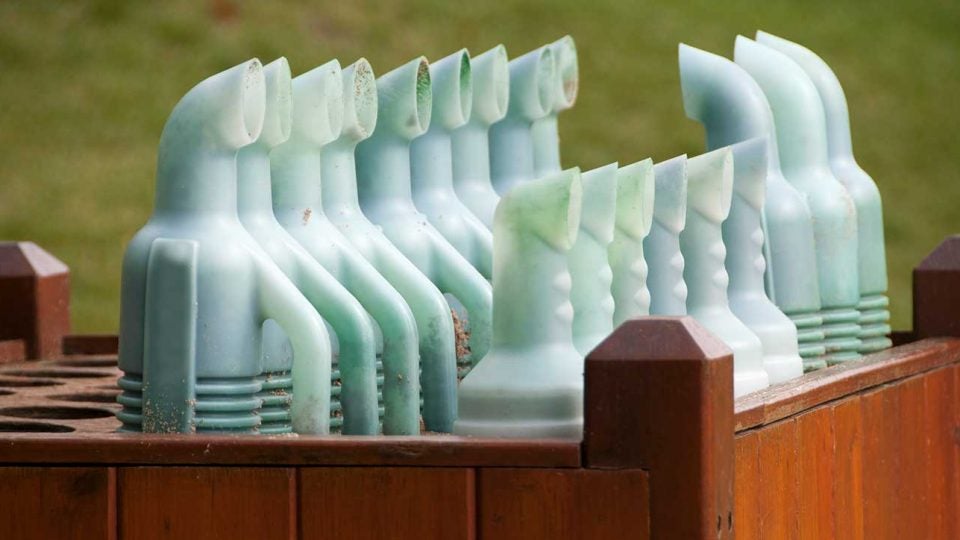 4 keys for hitting your wedges like Rory McIlroy
4 keys for hitting your wedges like Rory McIlroy
The Etiquetteist: How much damage should you feel obligated to fix while on the golf course?

Always leave the course in better condition than you found it.
It’s a golden rule of golf. But in our roles as unpaid course superintendents, how far are we required to go?
For help with that question, the Etiquetteist caught up with an actual superintendent, Josh Smith, of Orinda Country Club in California, and asked him for some guidelines on DIY repairs.
On the green
Fix your own ball mark and at least one other.
“That’s the baseline,” Smith says. “But if you’ve got time, keep at it and repair as many as you can.”
Smoothing out the putting surface isn’t just polite to players behind you. It’s also the right thing to do for the turf. How well a green recovers depends on many factors, including the climate, the type of grass and the volume of play, but the bottom line is this: a pitch mark left untended eventually becomes a permanent blemish, which the grounds crew has to deal with by punching out and replacing the damaged turf.
“Repairing pitch marks is good etiquette and good karma,” Smith says. “My thinking is, if I take care of this green now, my birdie putt is more likely to drop a few holes later.”
On the fairway and the tee
What to do with divots? For starters, Smith says, find out if the club prefers to have those divots sanded or replaced. If it’s the former, how much sand to use?
Ideally, enough that the entire torn-up patch is filled as close as possible to the level of the soil. If you’re going to err, Smith says, it’s better to err on the side of overfilling, then stomp on the sand to level it off.
Under-filled divots are more common, Smith says. They also present more problems, as balls are more likely to settle in them, leaving some poor golfer behind you with an awful lie.
You may have heard that an over-filled divot is bad for mowers. In Smith’s experience, that’s not much of a worry. Most mowers, he says, have rollers in front, which flatten the sand before the blades reach it. As with ball marks on the greens, it’s a good practice to sand other divots in the fairway in addition to your own.
ADVERTISEMENT
To replace a divot, the toupee you’ve uprooted needs to be intact, or close to it. Lay it back in place and press it down. Sand around it if there’s any void.
If you come across an old torn-up piece of turf, you can replace it, too, Smith says, but only do so if it still has some moisture. A dried-out patch of grass is unlikely to take root.
On par-3s, many courses leave containers of sand beside the tee box. It’s there for a reason. Do your part.
In the bunker
Do we really need to say this? OK, we will. After hitting your shot, rake the sand until it’s smooth. And by rake, we mean rake, using both hands and pushing back and forth.
“Dragging the rake behind you isn’t really going to do the trick,” Smith says.
Before stepping out of a bunker onto the green, knock the sand off the bottom of your shoes so you don’t leave a footprint trail on the putting surface. Though sandy footprints won’t damage the green (greens get sanded all the time), they do prevent putts from rolling purely. They are also an aesthetic affront.
“Visually,” Smith says, “it takes away from the hard work that went into getting those greens looking good in the first place.”
Other random stuff
Toppled stakes. Downed ropes. Overturned tee markers. If you come across them, try to put them back as they belong. You may not get things exactly right, but at least you’ll be doing the right thing.
“And that’s good karma, too,” Smith says.
To receive GOLF’s all-new newsletters, subscribe for free here.
ADVERTISEMENT








